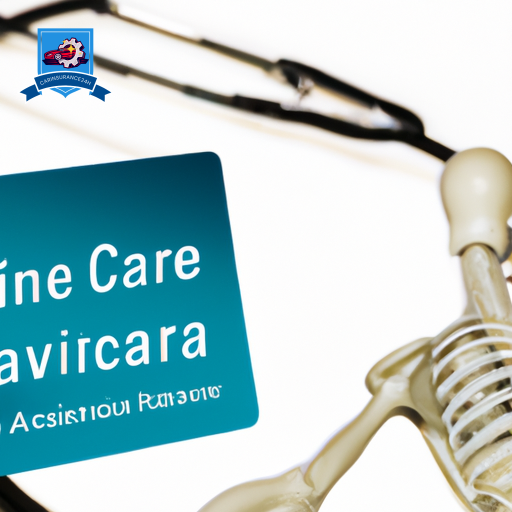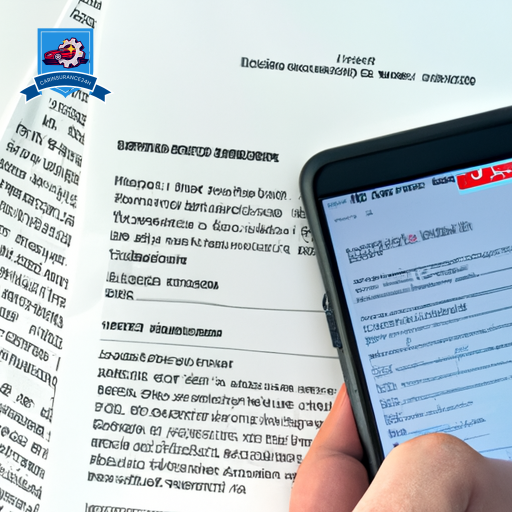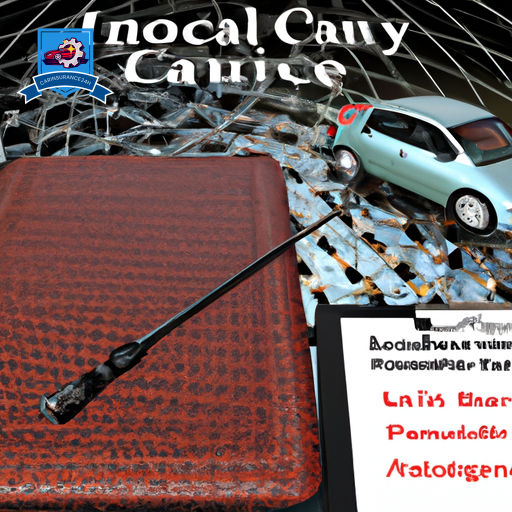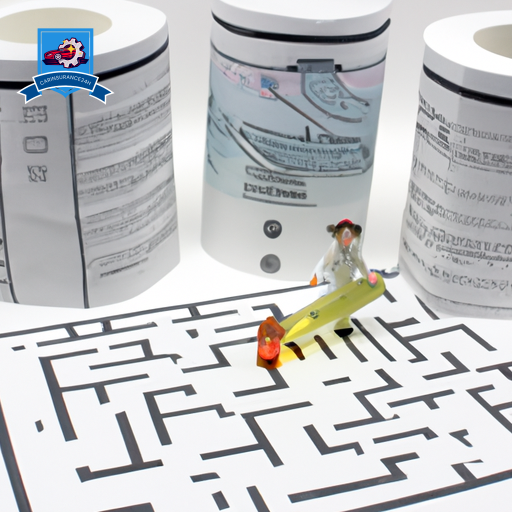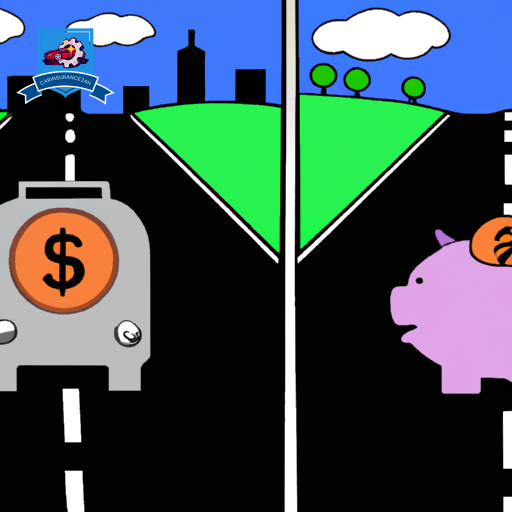In the aftermath of a car accident, the coverage provided by Medpay and traditional health insurance offers a dichotomy of solutions for handling injury-related expenses. Medpay, a feature within auto insurance policies, presents an immediate, no-fault coverage for medical bills, whereas health insurance, governed by a broader spectrum of guidelines, offers a more extensive safety net with its own set of limitations and deductibles.
The intricate nuances between the two, from coverage limits to the intricacies of claim processes, raise pivotal questions about their efficacy and suitability for policyholders. Understanding these differences is important for anyone seeking to navigate the financial aftermath of car accident injuries, prompting a closer examination of the benefits and drawbacks inherent in each option.
Understanding Medpay Coverage
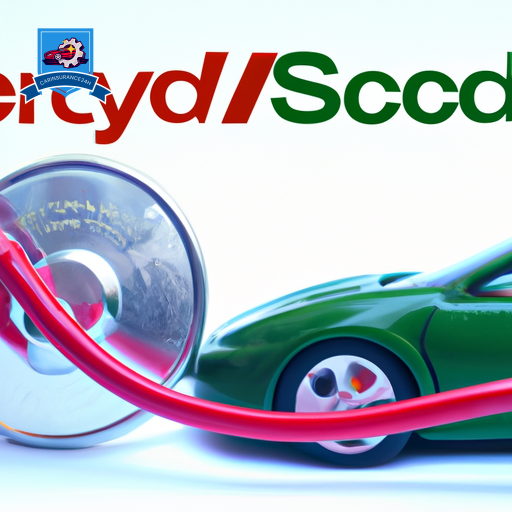
Medpay, or Medical Payments coverage, is an optional auto insurance provision that offers financial protection for medical expenses incurred due to a car accident, regardless of who is at fault. This coverage is vital for individuals seeking immediate financial assistance for medical bills following an accident, providing a layer of security over and above what might be covered by standard health insurance policies or the at-fault driver’s insurance.
To understand Medpay’s scope, it’s essential to explore the aspects of Medpay eligibility and payment timing. Medpay eligibility is straightforward, extending coverage to the policyholder, passengers, and, in certain cases, other drivers operating the insured vehicle, provided they have the policyholder’s permission. This inclusivity ensures that medical expenses can be covered for a broad range of individuals affected by an auto accident, making it a valuable addition to one’s insurance portfolio.
Regarding payment timing, Medpay is designed to offer prompt financial relief for covered medical expenses, often without the deductible or copayment requirements typical of health insurance policies. Payments are typically processed once proof of the incurred expenses is submitted, streamlining the reimbursement process. This expediency in payment is one of Medpay’s most compelling features, allowing policyholders and covered individuals to focus on recovery without the added stress of immediate financial burden.
The Basics of Health Insurance
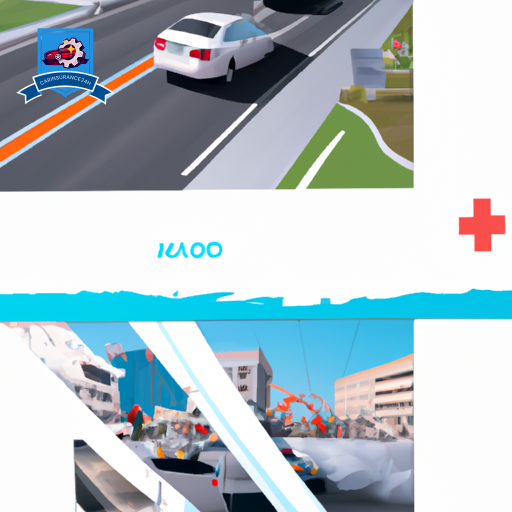
Understanding the intricacies of health insurance becomes imperative when comparing it to specialized coverages like Medpay for a thorough assessment of financial protection following car accidents. Health insurance, a broad term encompassing various policy types, serves as a fundamental pillar in managing healthcare expenses. These policies are designed to cover medical costs incurred due to illnesses, injuries, and preventive care. However, the scope and extent of coverage are largely dictated by the type of policy chosen.
The marketplace offers a wide array of policy types, each with its unique structure of benefits. Preferred Provider Organizations (PPOs), Health Maintenance Organizations (HMOs), Exclusive Provider Organizations (EPOs), and Point of Service (POS) plans are among the most prevalent. Each type dictates the network of healthcare providers and facilities policyholders can access, influencing both the convenience and cost of care. Understanding the distinctions between these policy types is vital for individuals seeking the most appropriate health insurance coverage for their specific needs.
Furthermore, coverage exclusions represent a critical aspect of health insurance policies. These are conditions or services that the policy does not cover, which can include certain types of injuries, treatments, and pre-existing conditions. Exclusions vary widely between policies and can significantly affect the out-of-pocket expenses a policyholder may incur. For individuals involved in car accidents, it’s essential to review their health insurance policy’s exclusions to ascertain the extent of coverage available for injuries sustained. Such diligence ensures a well-informed comparison between health insurance and Medpay, facilitating a more strategic approach to securing a thorough financial protection.
Coverage Limits and Deductibles

Understanding the nuances of coverage limits and deductibles is essential when comparing Medpay and health insurance in the context of car accident injuries.
This segment will explore the distinctions between deductible amounts and the maximum coverage provided by both types of insurance.
A thorough analysis of these factors is vital for individuals seeking the most thorough and cost-effective coverage option.
Deductible Amounts Compared
A critical aspect of evaluating the effectiveness of Medpay and health insurance for car accident injuries lies in comparing their deductible amounts and coverage limits. Deductibles greatly influence the out-of-pocket expenses an insured must bear before their coverage begins. This comparison is essential for understanding which option better suits an individual’s needs, factoring in:
-
Premium factors: Higher premiums might correlate with lower deductibles, affecting the overall cost-benefit analysis.
-
Policy exclusions: Specific exclusions may necessitate higher deductibles or limit coverage, impacting the financial burden on the insured.
-
Out-of-pocket maximums: These caps can significantly affect the total expenses an individual may face following a car accident.
Making an informed decision requires a thorough understanding of these elements, as they directly impact the financial and emotional well-being of those involved.
Maximum Coverage Differences
Exploring the nuances of maximum coverage differences, including coverage limits and deductibles, is pivotal for individuals managing the complexities of Medpay and health insurance following car accident injuries. Understanding these differences is essential for making informed decisions about the adequacy of coverage and potential out-of-pocket costs.
| Aspect | Medpay | Health Insurance |
|---|---|---|
| Coverage Limits | Typically lower | Generally higher |
| Deductibles | Often none | Usually applicable |
| Policy Renewal | Not affected by claims | May consider claims |
This table highlights the stark contrasts in coverage limits and deductibles between Medpay and health insurance, illustrating the importance of considering coverage exclusions and policy renewal terms. Such differences have a significant impact on the financial and emotional well-being of individuals managing post-accident medical care.
Handling Car Accident Injuries
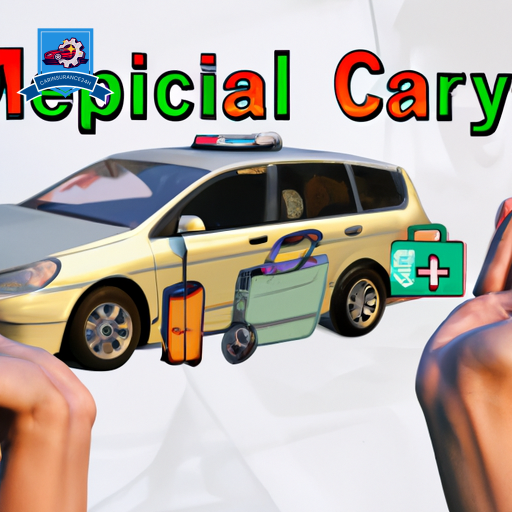
How do individuals efficiently manage injuries resulting from car accidents to guarantee peak recovery and minimal financial burden? The aftermath of a car accident can be both physically and emotionally taxing. Properly handling the situation requires a structured approach, focusing on immediate medical care, understanding the legal implications, and considering long-term rehabilitation needs. This approach ensures both health and financial concerns are adequately addressed.
-
Emergency Response: The first step involves immediate medical attention. Emergency response teams play a critical role in evaluating injuries and facilitating swift transport to medical facilities. This prompt action is essential for preventing complications and ensuring a better prognosis. However, beyond the immediate physical care, there are legal implications to consider. Reporting the accident and securing a copy of the report is essential. This document serves as a key piece of evidence for insurance claims and potential legal actions. The integration of emergency care with legal preparedness forms the foundation for handling car accident injuries effectively.
-
Comprehensive Medical Evaluation: Following emergency care, a thorough medical examination is vital. This step identifies any latent injuries that might not be immediately apparent, ensuring a thorough treatment plan is developed.
-
Rehabilitation and Recovery: The journey to recovery often involves specialized rehabilitation services. These services are essential for restoring function, reducing pain, and improving quality of life.
Managing car accident injuries demands a multifaceted approach, addressing immediate health concerns, legal implications, and long-term rehabilitation needs. This thorough strategy ensures individuals can achieve peak recovery while minimizing financial strain.
Medpay Vs Health Insurance: Costs

Understanding the financial implications of managing car accident injuries necessitates a comparison between Medpay and health insurance costs. The distinction in pricing models between these two types of insurance directly impacts the policyholders’ financial responsibilities. Premium factors play a pivotal role in shaping the cost landscape of both Medpay and health insurance, influencing the overall affordability and value proposition of these policies.
Medpay, or Medical Payments coverage, typically operates as an add-on to auto insurance policies. Its premiums are influenced by factors such as the policyholder’s driving history, the covered vehicle type, and the selected coverage limits. Since Medpay is designed to supplement existing coverage, its cost is relatively low compared to standalone health insurance policies. However, it’s important to note that Medpay does not replace extensive health insurance but serves to cover immediate medical expenses following a car accident, regardless of fault.
On the other hand, health insurance premiums are determined by a broader range of factors, including the policyholder’s age, location, health status, and the plan’s coverage scope. Health insurance offers more extensive benefits, covering a wide array of health services beyond car accident-related injuries. This broad coverage comes with higher premium costs, but it also provides broader financial protection against medical expenses.
Policy renewal practices for both Medpay and health insurance also influence long-term costs. While Medpay premiums may adjust based on changes in driving records or vehicle updates, health insurance premiums can increase due to factors like aging or changes in health status. Consequently, individuals must consider both immediate and future costs when choosing between Medpay and health insurance for car accident injury coverage.
Policyholder Benefits Comparison

In evaluating the benefits offered to policyholders by Medpay and health insurance in the context of car accident injuries, it is essential to examine several key dimensions.
These include the differences in coverage scope, the efficiency of the claim process, and the impact on out-of-pocket costs for the insured.
A thorough comparison of these aspects will provide insightful distinctions between the two types of insurance, enabling policyholders to make informed decisions.
Coverage Scope Differences
Evaluating the coverage scope differences between Medpay and health insurance reveals distinct policyholder benefits in the context of car accident injuries. Understanding these distinctions is critical, particularly in areas like policy prerequisites and exclusion criteria, which greatly influence coverage eligibility and extent.
-
Policy Prerequisites: Medpay typically does not impose strict prerequisites, offering a straightforward path to benefits post-accident. Conversely, health insurance may involve complex prerequisites that can delay or limit access to care.
-
Exclusion Criteria: Health insurance often contains broader exclusion criteria, potentially leaving policyholders without coverage for certain injuries or treatments related to car accidents.
-
Immediate Coverage Activation: Medpay provides immediate coverage post-accident, ensuring policyholders receive prompt medical attention without the worry of upfront costs or deductible fulfillment.
Claim Process Efficiency
Having explored the coverage scope differences between Medpay and health insurance, attention now shifts to the efficiency of their respective claim processes, a key factor in policyholder benefits post-accident.
The efficiency of a claim process is critically assessed through two lenses: the required claim documentation and the settlement speed. Medpay typically boasts a streamlined process, often requiring less exhaustive documentation than health insurance, thereby potentially accelerating the settlement speed.
Health insurance, conversely, may involve a more complex documentation process, reflecting a thorough review but possibly delaying settlement. This variance underscores the importance of understanding the claim process intricacies of each option.
Policyholders benefit from recognizing these differences, enabling more informed decisions based on anticipated claim process efficiency post-accident.
Out-of-Pocket Costs
When comparing Medpay to health insurance in the context of car accident injuries, understanding the differences in out-of-pocket costs becomes essential for policyholders aiming to make an informed decision.
Medpay often provides a straightforward approach to covering immediate medical expenses without the need for deductibles, making it a potentially valuable addition to emergency savings.
However, health insurance may offer broader coverage with the possibility of premium discounts based on policy details and personal health conditions.
Consider the following:
-
Medpay can supplement emergency savings by covering initial medical costs directly related to the accident.
-
Health insurance may offer premium discounts, reducing long-term costs for policyholders.
-
The choice between Medpay and health insurance may impact overall financial stability following an accident, influencing out-of-pocket expenses significantly.

Understanding the intricacies of the claim processes for Medpay and health insurance following a car accident is important for timely and effective compensation. Both insurance types have distinct procedures that claimants must navigate, often requiring meticulous attention to detail and adherence to specific timelines.
When dealing with Medpay, the process typically involves notifying your insurance provider about the accident as soon as possible, submitting any required documentation, and then undergoing a straightforward claims process. Medpay, being designed specifically for immediate medical expense coverage regardless of fault, usually does not involve complex investigations into the accident. However, it is critical to be aware of any policy exclusions that might affect your coverage.
On the other hand, managing health insurance claims can be more complex, particularly if the policy involves coordination with another insurance type, or when determining liability. Legal representation can be crucial in such cases, not only to make sure that all procedural requirements are met but also to handle potential disputes that might arise with insurance providers over coverage and liability. It’s essential to understand the terms of your health insurance policy, including any exclusions or prerequisites for coverage of injuries sustained in a car accident.
In both cases, prompt and accurate communication with your insurance provider is key. Providing thorough documentation of the accident, medical reports, and any other required information can expedite the claims process. Additionally, understanding your policy’s specifics, including exclusions and the need for legal representation, can help navigate the complex landscape of insurance claims, ensuring that you receive the compensation you’re entitled to without unnecessary delay.
Coordination of Benefits Explained
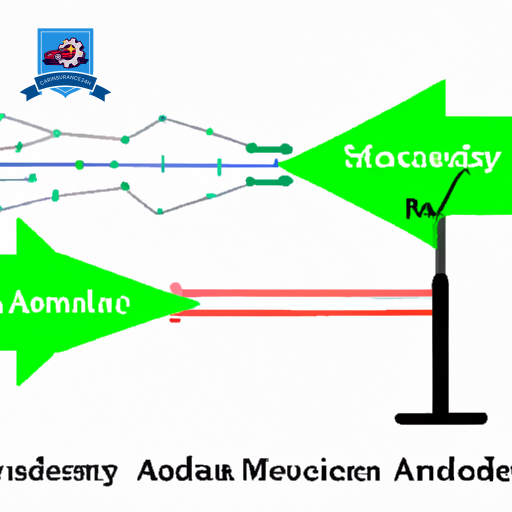
To navigate the complex landscape of insurance claims following a car accident effectively, it is imperative to comprehend the coordination of benefits between Medpay and health insurance. This intricate process determines the order in which your insurance policies contribute towards your medical expenses, factoring in policy exclusions and the possibility of benefit stacking. Understanding this coordination is critical to maximizing your coverage and minimizing out-of-pocket costs.
The coordination of benefits is governed by specific rules that define how your Medpay and health insurance interact. These rules guarantee that the payment of claims is fair and distributed appropriately between your policies. However, policyholders must be aware of several key points:
-
Policy Exclusions: Each policy has its own set of exclusions that may affect coverage. For example, some health insurance policies may not cover injuries related to car accidents if Medpay is in place, expecting Medpay to be the primary payer.
-
Benefit Stacking: In jurisdictions that allow it, benefit stacking enables policyholders to combine coverage limits from multiple policies or multiple vehicles on a single policy for a greater total coverage amount. This can significantly boost the funds available for medical expenses.
-
Primary vs. Secondary Payer: Typically, Medpay acts as the primary payer for immediate medical expenses after a car accident, with health insurance kicking in as a secondary payer. The coordination between the two can affect the timeline and amount of coverage.
Frequently Asked Questions
How Do Medpay and Health Insurance Handle Coverage for Alternative Treatments (E.G., Acupuncture or Chiropractic Care) Following a Car Accident?
MedPay and health insurance navigate the healing journey through coverage limits and pre-authorization requirements, especially for alternative treatments like acupuncture or chiropractic care, ensuring a structured pathway to recovery following a car accident.
Can Medpay or Health Insurance Premiums Increase After Claiming for a Car Accident Injury, and Under What Circumstances?
Medpay or health insurance premiums may increase following a claim for a car accident injury. Premium increases or policy cancellations depend on the claim’s nature, the policyholder’s history, and the insurer’s policies and regulations.
In What Ways Can Having Both Medpay and Health Insurance Impact Legal Proceedings if I’m Suing Another Driver for Damages?
Holding both Medpay and health insurance is akin to wielding a double-edged sword during settlement negotiations and liability considerations, optimizing compensation while maneuvering the complex interplay of policies that may influence the legal outcome.
Medpay and health insurance coverage for injuries sustained in a rideshare accident, such as with Uber or Lyft, hinge on specific rideshare policies and the passenger’s rights under their personal insurance agreements.
What Specific Steps Should I Take Immediately After a Car Accident to Ensure That My Medpay or Health Insurance Claims Are Not Denied Due to Procedural Errors?
Immediately after a car accident, initiate the emergency response by contacting authorities and seeking medical attention. Follow the documentation process meticulously by gathering evidence and filing a detailed report to avoid any claim denials.


